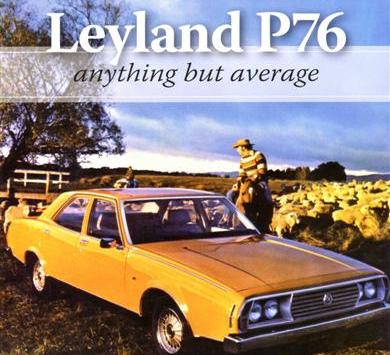Post by FlyNavy on Mar 17, 2009 20:14:49 GMT 12
Navy argues against Marine variant of JSF N.B. Two Years OLD news!
www.marinecorpstimes.com/news/2007/04/defense_stovl_jsf_070430m/
Corps defends JFF STOVL against assertions outlined in document By Christopher P. Cavas - Staff writer May 1, 2007
Despite public support by Pentagon and Navy leaders for the short-take-off/vertical-landing version of the Joint Strike Fighter, debates about the planned acquisition and operation of the F-35B continue behind the scenes — worrying Marine Corps officials and potential foreign customers who are counting on the versatile aircraft.
Navy officials have set no public deadline to settle JSF procurement plans, but a current Navy briefing document provides a rare window on the debate. It argues that the STOVL version should not fly as part of a carrier air wing.
The JSF program is slated to produce three variants: the F-35A, a conventional takeoff version; the F-35C, strengthened for carrier takeoffs and landings, and the F-35B, fitted with a liftfan that allows it to perform the crucial Marine missions of operating from amphibious ships and primitive bases in forward areas.
The plane’s biggest customers — the Navy and Air Force — are more enthusiastic about the higher-performance F-35A and C versions. But the five-year-old practice of including a Marine fighter squadron with most carrier air wings means putting the F-35B, with its slightly different shape and maintenance requirements, aboard the carriers.
In the briefing document, Navy tactical-aviation planners argue that the Marines should drop the F-35B in favor of the F-35C, at least for carrier-based units. They cite the differing operating characteristics of the STOVL aircraft and note the C’s superiority in range and weapons load.
“STOVL sub-optimizes CVW [carrier air wing] operations and capabilities,” Navy planners assert in the document, a copy of which was obtained by Defense News. “STOVL, while capable of CVN operations, should not be integrated into the CVW as part of a standard construct.”
Shopping plans
Officials in the Navy Department, which includes the Navy and Marine Corps, are trying to decide how many of each variant to buy. The Navy plans to buy a total of 680: 360 F-35Cs and 320 F-35Bs, although the Marines have a requirement for 420 JSFs.
Early-production F-35As are already five months into flight tests, while the first F-35B is scheduled to take to the air in 2008, and the F-35C in 2009.
In the document, Navy planners say the STOVL aircraft will have “thermal, pressure and acoustic effects more dramatic than models predict” and refer to issues certifying Marine V-22 Osprey tilt-rotor aircraft for shipboard operations. Flight deck movement will be restricted by blast from the aircraft, the planners wrote, and launching and recovering each STOVL F-35 will add two minutes to the carrier’s flight cycles.
Marine planners are digging in against these assertions, claiming built-in biases by Navy aviators against STOVL operations. They also say the briefing misuses and mischaracterizes numerous facts.
In the briefing, the Navy aviation planners list more than a dozen ways the F-35B short-takeoff-and-landing version will “sub-optimize” aircraft-carrier operations. Among other things, they say the F-35B will:
* Offer poorer capability and sustainability at a higher price than the carrier-optimized F-35C. The Marines say the STOVL aircraft outperforms the C model in all kinds of missions except carrier-based ones.
* Reduce flexibility in carrier-deck operations. Marines: That won’t be known until flight tests begin.
* Carry only 70 percent as much fuel as the F-35C. Marines: That advantage will be reduced by the F-35C’s heavier weight, by the -B’s ability to fly from forward bases, and by the fact that the STOVL version doesn’t need to carry backup fuel in case it can’t trap aboard a carrier.
* Not carry a 2,000-pound bomb in its internal bomb bay. Marines: The F-35B can carry one externally, and weapon is needed for only 15 percent of missions anyway.
* Lack an internally carried, stand-off weapon that can hit enemy radar. Marines: That could be remedied with the under-development Small Diameter Bomb.
* Lack an internally carried, stand-off weapon that can hit enemy ships. Marines: It carriers the Joint Stand-Off Weapon externally.
The use of Marine fighter squadrons in Navy carrier wings is mandated under the Navy-Marine Corps Tactical Air Integration plan, approved in 2004. By including Marine strike fighters in regular carrier deployment, each service was able to reduce the number of squadrons and aircraft. The TacAir plan allowed planners to cut the total procurement of F-35s and F/A-18 Super Hornets by nearly 500 aircraft, saving — according to the Navy in 2004 — about $35 billion.
The Marines, committed to an “all-STOVL force,” intend to replace the current crop of AV-8B Harrier jumpjets and F/A-18 Hornets with the F-35B. Replacement of the Harrier with the JSF is not at issue. Rather, the problem facing Navy planners is how to manage the STOVL F-35Bs in a wing otherwise composed of F-35Cs, F/A-18E and -F Super Hornets and EA-18G Growlers.
The Navy is committed throughout its aviation community to “necking down” the number of different types of aircraft to a handful of basic models. Last year, the strike fighter community finished their switch from the F-14 Tomcat to an all-F/A-18 force. Several observers note that introducing the F-35 into the -18 mix could strike Navy planners as counter-productive, and figuring how to use yet another version of the F-35 would only compound perceived problems.
That notion struck one aviation analyst as silly.
“I’ve never seen any definitive analysis that says a STOVL aircraft can’t be successfully integrated into a carrier wing,” he said. “I think what you have is this sort of culture in the Navy that says we just don’t do it that way. I’m not convinced [STOVL aircraft] can’t work with air wings.”
At the other end of the cultural debate, the Marines argue they didn’t join up to fly from carriers.
“The surface story of blue and green working together is great,” said Dakota Wood, a former Marine officer who is now an analyst with the Center for Strategic and Budgetary Assessments. “But the reality is that [in a carrier wing] you’re on Navy time, and the Marine Corps ground commander is saying, where is my tac air?”
The comparisons of the two JSF versions also struck Wood as “an unfair comparison. Each version has been optimized for the environment in which it’s to be employed.”
“The legitimate argument,” he said, “is how you’re going to use the airplane.”
Ships Riding on JSF
And while the Navy and Marine Corps continue their debate over the JSF, at least two members of the 11-nation JSF partnership have a far deeper interest in the survival of the STOVL plane.
Britain is making an enormous investment — $7.7 billion in ship construction costs alone — in building two 65,000-metric-ton aircraft carriers intended to operate the F-35B. Later this year, Italy expects to commission the 27,000-metric-ton carrier Cavour, specifically intended to operate JSFs as a replacement for its aging carrier-capable AV-8B Harriers.
The planned 131-aircraft Italian JSF order — 22 STOVLs and 109 conventional aircraft for the Air Force — is strictly linked to the need to replace the Harriers, Italian Defense Undersecretary Lorenzo Forcieri said Jan. 16.
The British are even more dependent on the F-35B, as they have chosen to build their two carriers without the steam catapults planned for the French Navy’s similar PA2 ship.
Evidence of British concern for the health of the F-35B program was published by the Ministry of Defence (MoD) April 27. MoD said it “remained fully committed to the carrier program” but added, “The department continues to closely monitor the U.S. STOVL requirements and the performance of the STOVL variant.”
With no other STOVL strike fighter in development, loss of the F-35B would mean British planners could choose to install catapults — early design work on the ships accounted for this possibility — and decide between the French Rafale, F/A-18 or another competitor.
British support for the F-35B is seen by many observers as a key element in the survival of the variant in last year’s Quadrennial Defense Review (QDR). Although the QDR was completed over a year ago, the British carrier program remains a major ingredient in the STOVL program.
A British government official said Pentagon officials “periodically seek updates from the British government on the status of the carrier program — a move that some have suggested has less to do with Britain’s interest in building the ships than whether London is wavering on the raison d’être for the JSF STOVL program.”
Debate goes on
Inside the Pentagon, Navy and Marine Corps planners continue to debate the issue, which soon could move to Capitol Hill. Sources close to service leaders Adm. Mike Mullen of the Navy and Gen. James Conway of the Marine Corps say both officers are seeking to avoid public disagreement on the JSF program and other issues and are working to find common ground.
“This is a 20-year discussion,” said an industry analyst. “It’s not going to be over just because the Navy did a briefing.”
If Rumsfield didn't force the Navy-Marine Corps Tactical Air Integration plan on the Navy and Marines this wouldn't be an issue.
_________________________________________
www.defencetalk.com/forums/archive/index.php/t-6579.html
"StingrayOZ August 3rd, 2007
Yes, there has been no offical announcement about Australia purchasing the F-35B. It is however very commited to the F-35 program, it *DOES* want regional servicing to be based here, it will have two of the most capable small F-35 carriers going (bar the Cavour which is designed as a dedicated carrier). It does want a blue water capable navy, with the strength to operate independantly of the USN and the RN.
Spain hasn't even commited to the F-35 program. Spain will no doubt wait it out and see. Italy herself is not sure how many F-35B's she will get either. Britain threatend to pull out of the project entirely! Australia is in a simular state regarding F-35B purchases as any other country. Even the USMC isn't sure how it will pan out.
I would say there are certainly signs Australia is heading towards the F-35B route. For example the origional tender for the Canberra Class from Natavia had the skijump removed. Several illistrations, a large model was made. However it is now back on the ship and the tender.
What would Australia have to benift from announcing F-35B purchase 10 years before likely delivery date? Nothing, the media/opposition would jump on every F-35B delay or compare F-35A and F-35B in Telegraph fold out sections on how the government is buying an inferior plane for greater cost. APA would pipe up all over it. It would be far smarter to have the LHD's undergoing trials, F-35B's already a known quanity in other navies and then announce the highly successful purchase of the F-35B.
Even better, perform several proving exercises with US and RN forces including F-35B's, and study what the optimal number would be to operate from the LHD. Or from forward bases around the pacific or PNG.
Australia may purchase from existing USN/USMC orders much like the Superhornet deal if all parties agree.
Nothing is in concrete, but I would say its just a matter of say 2015 or 2020.
I also think the USMC should concider beefing up its LHD fixed wing capabilities with say a skijump. The larger size of the new LHD's should go some way to mitigating the additional burdens of F-35B over the harrier (greater weight, size, etc)."
www.marinecorpstimes.com/news/2007/04/defense_stovl_jsf_070430m/
Corps defends JFF STOVL against assertions outlined in document By Christopher P. Cavas - Staff writer May 1, 2007
Despite public support by Pentagon and Navy leaders for the short-take-off/vertical-landing version of the Joint Strike Fighter, debates about the planned acquisition and operation of the F-35B continue behind the scenes — worrying Marine Corps officials and potential foreign customers who are counting on the versatile aircraft.
Navy officials have set no public deadline to settle JSF procurement plans, but a current Navy briefing document provides a rare window on the debate. It argues that the STOVL version should not fly as part of a carrier air wing.
The JSF program is slated to produce three variants: the F-35A, a conventional takeoff version; the F-35C, strengthened for carrier takeoffs and landings, and the F-35B, fitted with a liftfan that allows it to perform the crucial Marine missions of operating from amphibious ships and primitive bases in forward areas.
The plane’s biggest customers — the Navy and Air Force — are more enthusiastic about the higher-performance F-35A and C versions. But the five-year-old practice of including a Marine fighter squadron with most carrier air wings means putting the F-35B, with its slightly different shape and maintenance requirements, aboard the carriers.
In the briefing document, Navy tactical-aviation planners argue that the Marines should drop the F-35B in favor of the F-35C, at least for carrier-based units. They cite the differing operating characteristics of the STOVL aircraft and note the C’s superiority in range and weapons load.
“STOVL sub-optimizes CVW [carrier air wing] operations and capabilities,” Navy planners assert in the document, a copy of which was obtained by Defense News. “STOVL, while capable of CVN operations, should not be integrated into the CVW as part of a standard construct.”
Shopping plans
Officials in the Navy Department, which includes the Navy and Marine Corps, are trying to decide how many of each variant to buy. The Navy plans to buy a total of 680: 360 F-35Cs and 320 F-35Bs, although the Marines have a requirement for 420 JSFs.
Early-production F-35As are already five months into flight tests, while the first F-35B is scheduled to take to the air in 2008, and the F-35C in 2009.
In the document, Navy planners say the STOVL aircraft will have “thermal, pressure and acoustic effects more dramatic than models predict” and refer to issues certifying Marine V-22 Osprey tilt-rotor aircraft for shipboard operations. Flight deck movement will be restricted by blast from the aircraft, the planners wrote, and launching and recovering each STOVL F-35 will add two minutes to the carrier’s flight cycles.
Marine planners are digging in against these assertions, claiming built-in biases by Navy aviators against STOVL operations. They also say the briefing misuses and mischaracterizes numerous facts.
In the briefing, the Navy aviation planners list more than a dozen ways the F-35B short-takeoff-and-landing version will “sub-optimize” aircraft-carrier operations. Among other things, they say the F-35B will:
* Offer poorer capability and sustainability at a higher price than the carrier-optimized F-35C. The Marines say the STOVL aircraft outperforms the C model in all kinds of missions except carrier-based ones.
* Reduce flexibility in carrier-deck operations. Marines: That won’t be known until flight tests begin.
* Carry only 70 percent as much fuel as the F-35C. Marines: That advantage will be reduced by the F-35C’s heavier weight, by the -B’s ability to fly from forward bases, and by the fact that the STOVL version doesn’t need to carry backup fuel in case it can’t trap aboard a carrier.
* Not carry a 2,000-pound bomb in its internal bomb bay. Marines: The F-35B can carry one externally, and weapon is needed for only 15 percent of missions anyway.
* Lack an internally carried, stand-off weapon that can hit enemy radar. Marines: That could be remedied with the under-development Small Diameter Bomb.
* Lack an internally carried, stand-off weapon that can hit enemy ships. Marines: It carriers the Joint Stand-Off Weapon externally.
The use of Marine fighter squadrons in Navy carrier wings is mandated under the Navy-Marine Corps Tactical Air Integration plan, approved in 2004. By including Marine strike fighters in regular carrier deployment, each service was able to reduce the number of squadrons and aircraft. The TacAir plan allowed planners to cut the total procurement of F-35s and F/A-18 Super Hornets by nearly 500 aircraft, saving — according to the Navy in 2004 — about $35 billion.
The Marines, committed to an “all-STOVL force,” intend to replace the current crop of AV-8B Harrier jumpjets and F/A-18 Hornets with the F-35B. Replacement of the Harrier with the JSF is not at issue. Rather, the problem facing Navy planners is how to manage the STOVL F-35Bs in a wing otherwise composed of F-35Cs, F/A-18E and -F Super Hornets and EA-18G Growlers.
The Navy is committed throughout its aviation community to “necking down” the number of different types of aircraft to a handful of basic models. Last year, the strike fighter community finished their switch from the F-14 Tomcat to an all-F/A-18 force. Several observers note that introducing the F-35 into the -18 mix could strike Navy planners as counter-productive, and figuring how to use yet another version of the F-35 would only compound perceived problems.
That notion struck one aviation analyst as silly.
“I’ve never seen any definitive analysis that says a STOVL aircraft can’t be successfully integrated into a carrier wing,” he said. “I think what you have is this sort of culture in the Navy that says we just don’t do it that way. I’m not convinced [STOVL aircraft] can’t work with air wings.”
At the other end of the cultural debate, the Marines argue they didn’t join up to fly from carriers.
“The surface story of blue and green working together is great,” said Dakota Wood, a former Marine officer who is now an analyst with the Center for Strategic and Budgetary Assessments. “But the reality is that [in a carrier wing] you’re on Navy time, and the Marine Corps ground commander is saying, where is my tac air?”
The comparisons of the two JSF versions also struck Wood as “an unfair comparison. Each version has been optimized for the environment in which it’s to be employed.”
“The legitimate argument,” he said, “is how you’re going to use the airplane.”
Ships Riding on JSF
And while the Navy and Marine Corps continue their debate over the JSF, at least two members of the 11-nation JSF partnership have a far deeper interest in the survival of the STOVL plane.
Britain is making an enormous investment — $7.7 billion in ship construction costs alone — in building two 65,000-metric-ton aircraft carriers intended to operate the F-35B. Later this year, Italy expects to commission the 27,000-metric-ton carrier Cavour, specifically intended to operate JSFs as a replacement for its aging carrier-capable AV-8B Harriers.
The planned 131-aircraft Italian JSF order — 22 STOVLs and 109 conventional aircraft for the Air Force — is strictly linked to the need to replace the Harriers, Italian Defense Undersecretary Lorenzo Forcieri said Jan. 16.
The British are even more dependent on the F-35B, as they have chosen to build their two carriers without the steam catapults planned for the French Navy’s similar PA2 ship.
Evidence of British concern for the health of the F-35B program was published by the Ministry of Defence (MoD) April 27. MoD said it “remained fully committed to the carrier program” but added, “The department continues to closely monitor the U.S. STOVL requirements and the performance of the STOVL variant.”
With no other STOVL strike fighter in development, loss of the F-35B would mean British planners could choose to install catapults — early design work on the ships accounted for this possibility — and decide between the French Rafale, F/A-18 or another competitor.
British support for the F-35B is seen by many observers as a key element in the survival of the variant in last year’s Quadrennial Defense Review (QDR). Although the QDR was completed over a year ago, the British carrier program remains a major ingredient in the STOVL program.
A British government official said Pentagon officials “periodically seek updates from the British government on the status of the carrier program — a move that some have suggested has less to do with Britain’s interest in building the ships than whether London is wavering on the raison d’être for the JSF STOVL program.”
Debate goes on
Inside the Pentagon, Navy and Marine Corps planners continue to debate the issue, which soon could move to Capitol Hill. Sources close to service leaders Adm. Mike Mullen of the Navy and Gen. James Conway of the Marine Corps say both officers are seeking to avoid public disagreement on the JSF program and other issues and are working to find common ground.
“This is a 20-year discussion,” said an industry analyst. “It’s not going to be over just because the Navy did a briefing.”
If Rumsfield didn't force the Navy-Marine Corps Tactical Air Integration plan on the Navy and Marines this wouldn't be an issue.
_________________________________________
www.defencetalk.com/forums/archive/index.php/t-6579.html
"StingrayOZ August 3rd, 2007
Yes, there has been no offical announcement about Australia purchasing the F-35B. It is however very commited to the F-35 program, it *DOES* want regional servicing to be based here, it will have two of the most capable small F-35 carriers going (bar the Cavour which is designed as a dedicated carrier). It does want a blue water capable navy, with the strength to operate independantly of the USN and the RN.
Spain hasn't even commited to the F-35 program. Spain will no doubt wait it out and see. Italy herself is not sure how many F-35B's she will get either. Britain threatend to pull out of the project entirely! Australia is in a simular state regarding F-35B purchases as any other country. Even the USMC isn't sure how it will pan out.
I would say there are certainly signs Australia is heading towards the F-35B route. For example the origional tender for the Canberra Class from Natavia had the skijump removed. Several illistrations, a large model was made. However it is now back on the ship and the tender.
What would Australia have to benift from announcing F-35B purchase 10 years before likely delivery date? Nothing, the media/opposition would jump on every F-35B delay or compare F-35A and F-35B in Telegraph fold out sections on how the government is buying an inferior plane for greater cost. APA would pipe up all over it. It would be far smarter to have the LHD's undergoing trials, F-35B's already a known quanity in other navies and then announce the highly successful purchase of the F-35B.
Even better, perform several proving exercises with US and RN forces including F-35B's, and study what the optimal number would be to operate from the LHD. Or from forward bases around the pacific or PNG.
Australia may purchase from existing USN/USMC orders much like the Superhornet deal if all parties agree.
Nothing is in concrete, but I would say its just a matter of say 2015 or 2020.
I also think the USMC should concider beefing up its LHD fixed wing capabilities with say a skijump. The larger size of the new LHD's should go some way to mitigating the additional burdens of F-35B over the harrier (greater weight, size, etc)."





 ).
).




